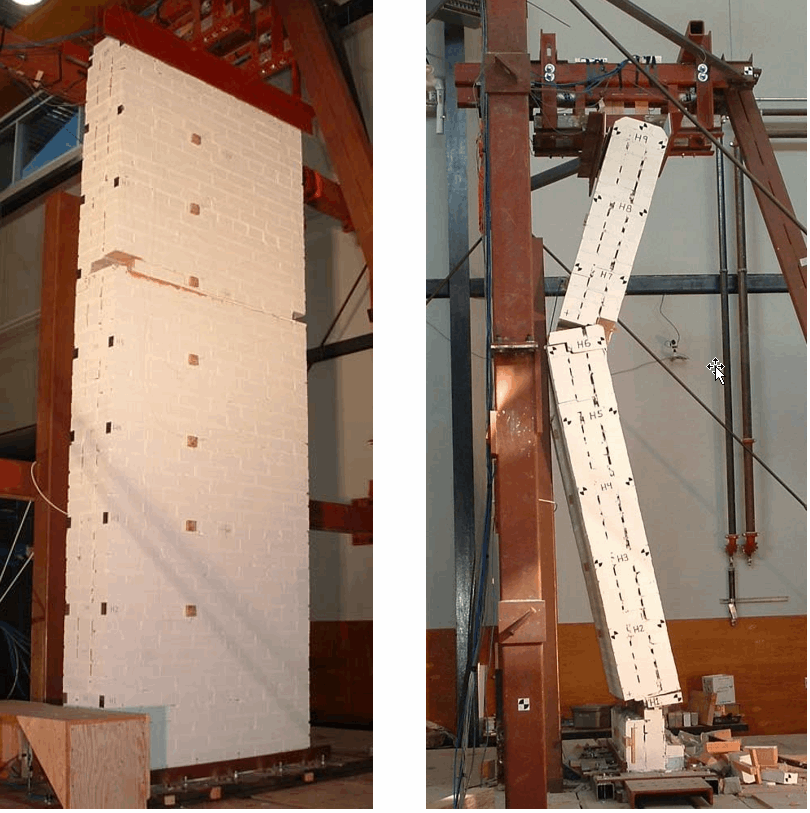Chris Meisl1, Dominic Mattman1, Kenneth Elwood2, Tim White3, and Carlos Ventura4
- Graduate Research Assistant, Dept of Civil Engineering, University of British Columbia, 6250 Applied Science Lane, Vancouver, BC, V6T 1Z4
- Assistant Professor, Dept of Civil Engineering, University of British Columbia, elwood@civil.ubc.ca
- Post-Doctoral Researcher, Dept of Civil Engineering, University of British Columbia
- Professor, Dept of Civil Engineering, University of British Columbia, ventura@civil.ubc.ca
ABSTRACT
Given sufficient anchorage to the diaphragms, out-of-plane walls in unreinforced masonry buildings have been shown to crack above mid-height and rock as two rigid bodies. This study investigates the sensitivity of the rocking response to the type of ground motion and the quality of the wall construction. A parametric study using a nonlinear-elastic single-degree-of-freedom model suggests that buildings located on firm ground sites are less likely to experience out-ofplane wall failures compared with buildings located on soft soil sites. Results are presented for shake table tests on two full-scale three-wythe unreinforced masonry walls; one with good quality collar joints, the other with poor collar joints. Stable rocking behaviour was observed for both walls when the input ground motion was scaled beyond the uniform hazard spectrum from the proposed 2005 National Building Code of Canada (NBCC).
KEYWORDS: earthquakes, shake table tests, out-of-plane, unreinforced masonry walls, clay brick
4c-3



